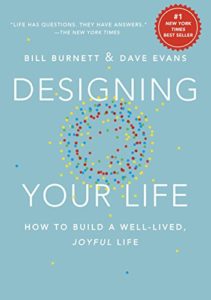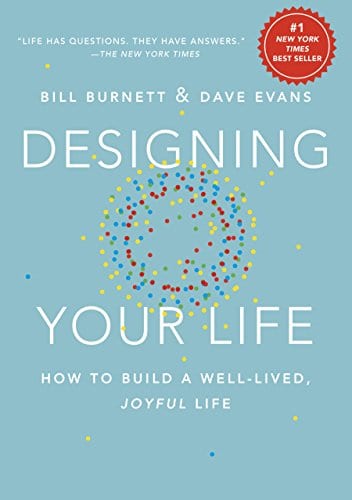 By: Bill Burnett and Dave Evans
By: Bill Burnett and Dave Evans
Reviewed by: Janey Piroli
The Premise: Authors Bill Burnett and Dave Evans have both achieved great success working in and around Silicon Valley since the 1970s. Working within the product design space of many businesses, from young start-ups to Fortune 100 companies, they gained ample expertise with the design thinking process (in fact, Dave was the product manager behind the first Apple mouse). Both men also shared a passion for teaching and found themselves working with students at Stanford University. It was over a lunch conversation that they recognized the impact they could have helping students answer one of the most challenging and frequently asked design questions. The course they worked to create and offer to Stanford students is now available for all of us to learn from as we seek to answer the same daunting question, ‘What do I want to be when I grow up?”
The book is organized into 11 chapters that take the reader through the Life Design process. It feels very much like being guided through the process by a wise and caring mentor who is full of great wisdom and thought-provoking insights. There are many examples and stories of individuals in all stages of life who have come to a point in their career where they are questioning, “What next? What more? What else?” Make sure you have a journal on hand to capture your reflections and notes as each chapter includes a great set of exercises, reflection questions and many tools to support the learning journey. As an added bonus, Burnett and Evans make these same tools available for download on their website: www.designingyour.life.
The bottomline: Overall, I really enjoyed this book and have already recommended it to a few close friends. Although I personally did not complete all of the exercises, I came away with a better understanding of the mindset required to solve any design issue: Be Curious, Try Stuff, Reframe Problems, Know It’s a Process and Ask for Help. The tools are a great addition to my leadership and coaching toolkit. Although I was familiar with a few of the approaches (i.e. mind mapping, visioning, etc.), Burnett and Evans layered in additional methods to help better evaluate the ideas and assess where to get started (which can often be the biggest hurdle in gaining forward momentum). These are tools that I can leverage at any time in my own journey and/or will most definitely help in the coaching support that I provide to others. In fact, one entire chapter is dedicated to “building your team” – not your team of direct reports but the team of individuals – mentors, coaches and friends who can further support you on this journey. Even if you’re not the one in transition, you’ll learn a lot about how best to support those who are.
If there was one thing that I could change, it would be to experience and learn this material live in the classroom with Burnett and Evans. For now, I’ll take what I can get! Stanford will have to wait!
Recommendation: Recommended for leaders who are looking to create a life that they love.




